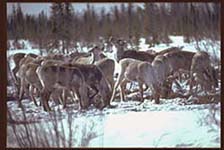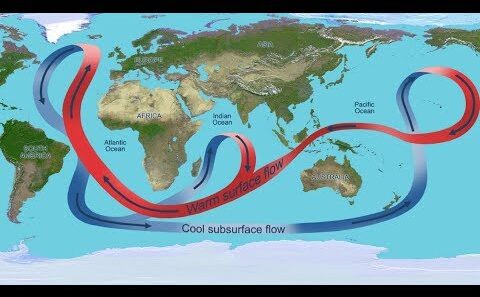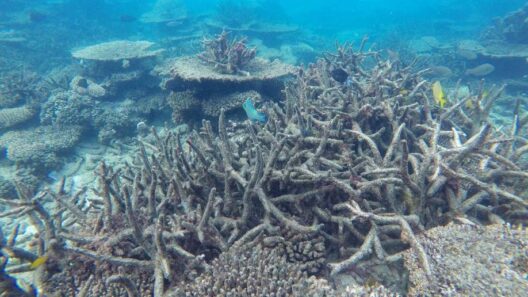The frozen tundra, a realm seemingly desolate and forbidding, transforms under the influence of climate change, unveiling its intricacies in a delicate dance between ice and life. Within these icy confines, fish are the understated protagonists, navigating a world sculpted by extremes. As temperatures rise and ecosystems falter, the plight of aquatic inhabitants becomes an urgent narrative in the broader saga of environmental upheaval.
Tundra ecosystems are typically characterized by permafrost, a subsoil layer that remains frozen year-round. Beneath this seemingly lifeless surface, however, lies a vibrant network of life. Among these resilient creatures are the fish that inhabit the frigid water bodies scattered across the tundra, from the expansive tundra lakes to winding rivers. These fish, adapted to endure harsh conditions, serve as indicators of ecosystem health—barometers reflecting the environmental shifts that have begun to unfold at an alarming pace.
As temperatures edge upward, ice-covered lakes are losing their stable, frozen facades, radically altering fish habitats. Species like Arctic char and lake trout, which prefer cold, well-oxygenated water, are faced with diminishing habitats. The metamorphosis from solid ice to liquid water is a double-edged sword; while some fish may benefit from expanded breeding grounds, others, unable to adapt swiftly to changing temperatures, find their existence precariously balanced on a melting precipice.
The once reliable freeze dates that dictate spawning cycles for many fish species have become erratic. The synchronicity that fish have danced to for eons is being disrupted by climate-induced irregularities. With spawning seasons shifting and migratory patterns changing, fish populations are at the brink of a crisis, struggling against environmental unpredictability. For example, salmon—a species synonymous with the rivers of the Arctic—has witnessed alterations in water temperatures and flow patterns that jeopardize their intricate life cycles. The gravel beds traditionally used for spawning may now be scoured away by increased runoff from thawing ice, threatening the next generation of these fish.
This precarious transformation in fish habitats resonates throughout the entire tundra ecosystem, establishing ripples of evolutionary pressure. As fish populations struggle, the repercussions cascade upward through the food web. Birds that rely on fish for nutrition find their survival intertwined with the health of aquatic ecosystems. Similarly, mammals, such as otters and bears, echo the plight of fish, as their foraging instincts champion a grim reality—the once-abundant fish stocks are thinning, leading to increased competition and altered migratory behaviors.
The underwater world of the tundra is anything but silent. Underneath the shimmering ice lies a cacophony of interactions, where fish communicate through subtle changes in behavior and coloration. This complex network of ecological relationships depends heavily on stable, cold environments. Yet, climate change introduces discord to this arrangement, prompting questions about the future of these vibrant communities. Could fish learn to navigate these shifting challenges, adapting with the flexibility of a dancer? Or will they falter, swept away like leaves in a tempest?
The unique appeal of the tundra lies in its stark beauty and the resilience of its life forms. It is a paradox of abundance stitched into a fabric of scarcity. The survival of fish here depends on an intricate balance, embodying both fragility and endurance. Yet, this idyllic realm is under siege from anthropogenic forces—rising global temperatures and associated effects like glacial melting are an ominous cloud shadowing the future of tundra ecosystems.
Moreover, the implications extend beyond individual species; the shift in fish populations can alter entire ecosystems. As fish populations ebb and flow in response to the changing tides of their environment, biodiversity is at risk. The loss of a single species ripples outward, leading to a decline in overall ecosystem functionality. Thus, the plight of tundra fish underscores a larger environmental narrative: the intricate tapestry of life, once resilient, is now fraying at the seams.
In this frozen wilderness, aquatic life becomes emblematic of broader environmental truths—showcasing both the impermanence of existence and the relentless march of change. The striking juxtaposition of frozen beauty and impending threat embodies the very essence of nature’s fragility. Observing how fish respond to these challenges allows us insight into adaptability and resilience, essential qualities as millions of organisms grapple with shifting climates.
The future of fish in tundra ecosystems reminds us to look beyond immediate aesthetics. It compels us to recognize that every fish, every ripple in the water, is a testament to the enduring spirit of life facing unprecedented challenges. As we witness the evolving narrative of these aquatic inhabitants, we are encouraged to reflect on our own role within this interwoven ecological tapestry. A call to action resonates within these waters, urging collective responsibility to safeguard the delicate balance of the tundra—a reminder that the fate of the fish ultimately reflects our shared destiny on this planet.
In a world quickly losing its icebound sanctuaries, we must heed the lessons from the tundra. To preserve these ecosystems and their aquatic inhabitants, we must engage in meaningful environmental stewardship, advocating for a sustainable future that embraces coexistence rather than exploitation. Like fish swimming against the current, we must embrace the challenge, fostering resilience in the face of uncertainty. The mantra of preservation can echo across the vastness of the tundra, reminding us that every effort counts in the battle against climate change.






